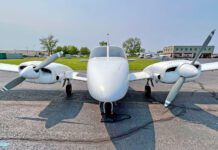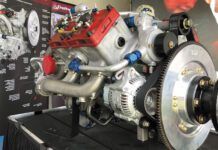LEAD AS A LUBRICANT?
I have excitedly watched the developing story on the rollout of G100UL as a drop-in replacement for 100LL. It’s completely fungible with 100LL; no more lead in the exhaust, longer lasting engines/oil/spark plugs and reduced maintenance (never mind the one downside: price increase). Everything seems to indicate that the testing has been “extensive and comprehensive” as is described in the FAQs on GAMI’s website, and that there will be nothing but benefits to this drop-in replacement for 100LL.
However I can’t help but wonder if there was one flaw in testing. Nearly every engine on the market today has used 100LL since the 1970s. Therefore I imagine that all the engines used in testing (both on the stand and in a plane) had previously used leaded fuel, which acts as a solid lubricant. One engine component where this lead lubrication proved important was the valves and valve seats. When the auto industry removed lead from fuel, valves (and therefore engines) had a shortened life span due to the removal of the solid lubricant. This issue was eventually overcome with engineering (hardening the valve seats). This wasn’t a big deal in the auto industry where the average age of a car is 12 years. After one decade of pain, most cars on the road had been re-engineered to use unleaded fuel and therefore no longer have any issues.
General aviation, on the other hand, has an average aircraft age of 30-plus years with a large portion of aircraft over the age of 50. I shouldn’t have to explain how this could end up being a much bigger/longer problem for GA than it was for the automotive world.
I would love to know if there was longevity testing done on an engine that has never touched leaded fuel and if there was, what were the results? Do GA engines have hardened valve seats? What else might need to be re-engineered on a modern-day GA engine to account for the lack of lead?
I have a lot of respect for the professionals at GAMI who put so much time and effort into making G100UL and getting it approved by the FAA (which seemed like it was unnecessarily difficult and tedious). At the same time, I do have some concerns about how taking the lead out of fuel may affect engines that were designed to have it.
Scott Voigt – via email
Somehow the myth of lead as a lubricant won’t die. We have tech data that addresses the matter of valve seat recession back from 1989 when unleaded mogas was being tested. The results were that valve seat recession from unleaded autogas was not significantly different from 100LL.
Almost all of the testing from the automotive world involved valve seats that were machined into cast iron heads, not hardened seats as in aircraft engines.
The product of combustion of tetraethyl lead (TEL) with the scavenging agent (ethylene dibromide) results in deposits of lead oxybromide (or lead bromide). It is a white powder that is considered by many to be a good abrasive when on valve stems, pistons and combustion chambers.
The short answer is that the “need lead to lubricate valve seats” idea was put to rest 34 years ago. We would think that the myth would have died by now.
FERRY SERVICES
Thanks for your article about aircraft ferrying options in the February 2023 Aviation Consumer. Over the years we’ve used quite a few companies, but have whittled down our list to just one company, National Pilot Service. Its owner, Andrew Payne, just “gets it.” His firm is experienced, responsive, reliable, realistic and trustworthy. So much so, I don’t bother calling anyone else.
If your first question for a potential ferry provider is “how much?,” you’re asking the wrong question. To me that question should be further down the list.
Chris Kirk – WildBlue Aircraft Sales
DAVID CLARK PRO-X2
I agree with the favorable results of your long-term Pro-X2 trial in the March 2023 Aviation Consumer. My Pro-X2 has been performing flawlessly and passengers love the set for its small frame and lightweight design. Keep up your great work.
Linc Washburne – via email




